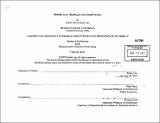| dc.contributor.advisor | Peter Testa. | en_US |
| dc.contributor.author | Lau, Edwin Kwok Chuen, 1976- | en_US |
| dc.contributor.other | Massachusetts Institute of Technology. Dept. of Architecture. | en_US |
| dc.date.accessioned | 2012-01-12T19:22:52Z | |
| dc.date.available | 2012-01-12T19:22:52Z | |
| dc.date.copyright | 2002 | en_US |
| dc.date.issued | 2002 | en_US |
| dc.identifier.uri | http://hdl.handle.net/1721.1/68381 | |
| dc.description | Thesis (M.Arch.)--Massachusetts Institute of Technology, Dept. of Architecture, 2002. | en_US |
| dc.description | Includes bibliographical references (p. 130-131). | en_US |
| dc.description.abstract | As the new millennium unfolds, the lifestyle of the global travelers have changed. The world is getting smaller, and the traditional physical boundaries that surround us can be easily overcome. Digital data, telephone, and the Internet have created a worldwide network that exchanges information transmitted in milliseconds. More important is the ability for of global inhabitants themselves to travel to various places on the map as the volume of air travel is expected to double in the next 10 years. Development in air travel has remained stagnant for the past 20 years. Passengers are treated as mobile human cargo, endless uncertainties exist, and everyone follows the same rigid process structure. Terminal inefficiency, inadequate runways, security, and social responsibilities are fundamental problems affecting airport designs. Stress, inefficiency, and fatigue are common symptoms from endless flights. Physical dislocation, and psychological impacts further bombard the traveler's state of mind. Based on concepts drawn from architecture, technology, and global business strategies, Travel-net is a hypothetical company that is developed to cater to the frequent travelers. It hopes to re-invent the travel process to give control back to this influx of global travelers. Identity will be reinstated, products will become integrated with architecture, strategic networking will streamline the process of air travel. New typology of terminal architecture, along with altered sequence of events, can appear either as insertions, extensions, or replacements of any port. The airport of the next generation will extend beyond the building and city to provide an alternative global infrastructure, an all-in-one package for the new global travelers. | en_US |
| dc.description.statementofresponsibility | by Edwin Kwok Chuen Lau. | en_US |
| dc.format.extent | 131 p. | en_US |
| dc.language.iso | eng | en_US |
| dc.publisher | Massachusetts Institute of Technology | en_US |
| dc.rights | M.I.T. theses are protected by
copyright. They may be viewed from this source for any purpose, but
reproduction or distribution in any format is prohibited without written
permission. See provided URL for inquiries about permission. | en_US |
| dc.rights.uri | http://dspace.mit.edu/handle/1721.1/7582 | en_US |
| dc.subject | Architecture. | en_US |
| dc.title | Travel //net : working for the global traveler | en_US |
| dc.title.alternative | Travel net | en_US |
| dc.title.alternative | Travel-net | en_US |
| dc.type | Thesis | en_US |
| dc.description.degree | M.Arch. | en_US |
| dc.contributor.department | Massachusetts Institute of Technology. Department of Architecture | |
| dc.identifier.oclc | 50543441 | en_US |
